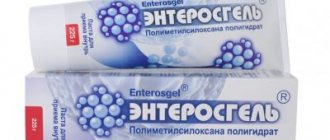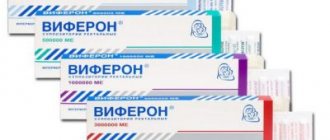The functioning of all human organ systems occurs due to the supply of sufficient nutrients to the body. Science knows many microelements, without which full life activity is impossible. Among them are fat-soluble vitamins, of which retinol is considered one of the most useful. Its main part enters the body with food. When retinol becomes insufficient, there is a need to replenish the deficiency with vitamin A tablets.
What is vitamin A? A brief history of its discovery
Vitamin A obtained from food goes through a series of biochemical processes that lead to the conversion of beta-carotene into a form available for absorption by the body - retinol. This compound acts as the active form of vitamin A and is recommended for use as a dietary supplement when a deficiency is detected. The vitamin was discovered by the German scientist Stepp in 1909 during an experiment on mice. The research involved observations of young rodents. It turned out that the active growth and development of mice stops if the food they receive is exposed to alcohol and ether. This fact is associated with the fact that under the influence of the compounds used, fats and lipoids dissolve.
In 1913, scientists came to the conclusion that mammals cannot fully develop without lipoids. And in 1914, they studied the chemical structure of products containing these substances and discovered an element that was given the name “growth factor” or “fat-soluble factor A.” In 1916, the discovered substance received its modern name - vitamin A.
Retinol: reviews and instructions for use
To date, only 2 components of cosmetics have evidence of effectiveness against facial wrinkles. Firstly, these are retinoids, which include retinol, retinaldehyde and tretinoin, and secondly, pure 10-15% L-ascorbic acid. The FDA believes that these are the only ingredients in cosmetics that actually affect collagen production in the skin, and any doctor will tell you that if the FDA recommends something (and this does not happen often), then it really works.
Tretinoin (trans-retinoic acid) is the most active form of vitamin A, and this drug at a concentration of 0.025% allows you to achieve significant skin rejuvenation. But preparations with tretinoin have an irritating effect on the skin, and their use often results in dryness, redness, and peeling of the skin (especially in the first weeks of use). Therefore, over time, the cosmetic industry began to use milder forms of retinoids - such as pure retinol and retinaldehyde (retinal).
How to use retinol for facial skin (instructions):
Planning –
It usually takes 2-4 weeks for the skin to adjust to retinol. During this period, redness, dryness, peeling, itching and burning of the skin may occur, which is especially typical for people with sensitive and/or dry skin. To reduce the risk of side effects, at the first stage you should use products with lower concentrations, or follow the following recommendations for use.
For example, during the first week you can use your product only 2 times, the next 2 weeks - use it only 3 times, then switch to the “every other day” mode. But your goal is to gradually reach a daily use regimen. The frequency of use greatly depends on the skin type and the initial concentration of the product. Therefore, some patients can immediately start using it every other day, i.e. This is all quite individual. If on any day you notice severe redness of the skin, then do not use the product for several days (then slightly reduce the frequency of use).
Is it possible to use retinol in summer?
In the summer, you can also use retinol, but then in parallel you must use sunscreen with SPF 50. If you decide to start using retinol during the heating season, then it is advisable to monitor the humidity in the room, because low air humidity + retinol will definitely lead to more pronounced side effects, which we described above. An excellent product with SPF 50, which is one of the few that can be applied even to the eyelids, is “Anthelios Shaka Fluid” from La Roche-Posay.
Conduct an audit of cosmetic products -
Get rid of any cosmetics while using retinol that have even the slightest irritating effect. For example, it will not be possible to use -
- scrubs and chemical peels,
- alcohol-based tonics,
- products that dry the skin
- It will also be impossible to wax depilation on areas of the skin treated with retinol.
Particularly sensitive areas of the face -
If you are using a product with a high 1.0% concentration of pure retinol, then avoid getting the product on the skin near the wings of the nose, the red border of the lips, and the area around the eyes. These are particularly sensitive areas where such concentrations can cause burns. If you use a 0.3% concentration, then it can even be applied around the eyes (only on the fixed part of the eyelids), but this concentration can only be used around the eyes 3 times a week. Even smaller concentrations can be used around the eyes daily.
When to apply retinol products -
Retinol products are applied only once a day, preferably in the evening or before bed. Before applying retinol, the skin of the face should be washed with a mild cleanser and then dried very well. After washing, you should wait at least 5 minutes. If you apply products with retinol to insufficiently dry skin, this will greatly irritate it (dryness, flaking, etc.). We hope that our article: Retinol for facial skin reviews was useful to you!
Sources:
1. Higher medical education of the author of the article, 2. Textbook of dermatology “Fitzpatrick's Dermatology” (8th edition), 3. American Academy of Dermatology (USA), 4. “Cosmetic dermatology” (Bauman L.). 5. Clinical studies published at https://www.ncbi.nlm.nih.gov/.
Properties of vitamin A. Benefits for the body
Retinol tablets act as an effective remedy in the complex treatment of infectious diseases, such as pneumonia and tuberculosis. Vitamin A also has an anti-inflammatory effect, which is associated with its ability to regulate the immune response of cells (). Retinol is involved in the synthesis of leukocytes, and also activates the production of antibodies when hostile viruses and bacteria enter the body.
It has been proven that vitamin A in tablets and other forms of release can prevent age-related skin changes. Characteristic signs for them are tissue dehydration, decreased collagen production and the appearance of wrinkles. Retinol starts the process of active synthesis of the skin matrix, thereby preventing skin damage and also ensuring its elasticity and firmness ().
The use of retinol in tablets promotes:
- ensuring the health of mucous membranes;
- preventing the development of pathological neoplasms;
- improving bone structure and strengthening it;
- maintaining the full functioning of the reproductive system;
- reducing the concentration of cholesterol in the blood;
- preventing kidney stone formation.
Vitamin A for eyes in tablets is prescribed for its deficiency, since the lack of this substance can provoke a number of pathological changes in the visual organs. They begin with a decrease in the quality of vision in twilight conditions. This phenomenon is called night blindness. It is associated with the fact that retinol is involved in the formation of rhodopsin. This visual pigment is responsible for the adaptation of the visual organs to lighting conditions (). The benefits of retinol for the eyes are also related to the fact that it prevents the appearance of macular degeneration and the development of age-related vision loss.
Retinol, retinoids. Cosmetic care for correcting age-related skin changes
The main age-related factor in the appearance of wrinkles is a decrease in the production of collagen and elastin, which are responsible for the smoothness of the skin and complexion.
Retinoids are biologically active forms of vitamin A that accelerate the process of cell renewal in connective tissue. In cosmetology, they are used to reduce the manifestations of photoaging (age spots), acne, hyperkeratosis, and wrinkles.
They have proven their effectiveness as an anti-aging component. By stimulating cell renewal, they reduce the area and number of wrinkles, and also trigger the synthesis of collagen and elastin.
Retinoids are the general name for forms of retinol, substances, both synthetic and natural, which are similar in action to retinol itself and contain vitamin A, have a similar effect on cells due to their action on receptors for retinoic acid (RA).
Vitamin A derivatives are divided into four generations - the substances of the first (retinol, retinaldehyde, tretinoin) are the most effective, but at the same time they are the most aggressive. All synthetic retinoids are medicinal substances and are not allowed in cosmetics.
Retinol is the first vitamin to be discovered at the beginning of the 20th century, which is why it received the “name” of the first letter of the alphabet. Retinol is true vitamin A, it is retinoic acid.
It is synthesized in our body from products containing beta-carotene, is responsible for healthy skin and hair, good vision, bone growth and immunity, slows down aging and is involved in the formation of new cells and restoration of the skin, and fights inflammation. It is because of a lack of vitamin A in the body that immunity decreases, hair begins to break and split, nails begin to peel, and skin begins to peel.
Retinol is known for its ability to renew the skin and have a slight peeling effect, stimulating collagen synthesis in the skin. As a result, the stratum corneum softens and evens out, and the first signs of aging disappear.
There are quite a few forms of retinol; several are used in cosmetics:
for problem skin use retinal, retinoic acid and tretinoin; Anti-aging products often use retinol acetate or retinol palmitate.
The concentration of retinol in homemade anti-aging creams is usually no more than 0.1%. In more serious medicinal drugs - from 0.4% to 1%.
Benefits of retinol:
- smoothes wrinkles and creases (including deep ones);
- accelerates the process of cell formation and regeneration;
- evens out tone and relief;
- lightens age spots;
- protects against negative environmental factors (antioxidant);
- stimulates the production of collagen and elastin;
- moisturizes and retains moisture;
- increases skin turgor (elasticity);
- improves blood circulation;
- fights acne (suppresses the activity of the sebaceous glands);
- fights post-acne (as a chemical peeling).
How does retinol work?
Interestingly, it is not retinol itself that affects cells. First, it turns into an active form called retinoic acid, which is what affects the skin. Retinol itself is very unstable. When exposed to air, it instantly oxidizes and loses all its properties.
Therefore, using it in its pure form in a cosmetic product is problematic. Manufacturers have to find different ways to preserve the core functionality of a component. For example, use the least capricious forms. Retinol palmitate is considered one of the most effective.
It is placed in microcapsules or combined with stabilizing molecules. If you look at the composition, you can find a certain pattern: the more additional molecules “attached” to retinol, the longer the product will “survive” in the air. But there is also a minus: each new molecule makes vitamin A less active.
Retinol in cosmetics is considered an almost magical mixture, as it quickly solves many problems. Due to its low molecular weight, it easily penetrates the skin at the cellular level and affects the superficial and deeper layers of the epidermis.
Retinoids, due to their ability to regenerate the skin, are best used in the evening. And in the morning, be sure to apply a product with a high SPF to protect against ultraviolet radiation, because pigment spots can appear from solar radiation.
If you take a closer look at the composition of products aimed at solving various skin problems, you may find that retinol or retinoids can work either together or separately. In a duet they enhance each other's effect. Such combinations are used more often in anti-aging and whitening cosmetics, as well as in aesthetic procedures, for example, retinoic peeling.
Retinol is a capricious substance that does not like to be in second place and does not tolerate combination with acids and acne treatment components. Retinol and vitamin C do not combine so well that they even cancel each other out.
When combining drugs containing retinol and exfoliating components (glycolic, salicylic acid), keratalics or acne treatment components (antibiotics of the erythromycin class or benzoyl peroxide), you are guaranteed irritation.
Mild retinoids with caffeine are a great option for sensitive skin. With this duet they produce products for the area around the eyes, and this is the “most vulnerable” of all areas. Together they successfully fight dark circles under the eyes, fatigue and photoaging.
Trans-retinol (labeled “TR” on packaging) is a very serious type of retinol found in night serums. It successfully copes with wrinkles, increases the elasticity and density of the skin, and generally gives the face a fresh look.
The effectiveness of retinol decreases when there is too much of it.
It is better not to combine retinol in high concentrations with itself. It is possible to exceed the maximum percentage, which can even result in a chemical burn.
Retinol is “friendly” with components that enhance its positive effect on the skin (they can be classified as retinol-like): adenosine, jasmonic acid derivatives, vitamin E, tocopherol, which protects retinol from oxidation and is therefore found in almost all retinoid preparations.
Rules for the use of retinoids in cosmetic care:
- Gradual introduction of products with retinol and retinoids. If you plan to use cosmetics with a high concentration of vitamin A, then the course should begin with an adaptation period: first use the product 2 times a week, gradually increasing the frequency of use.
- It is imperative to use cosmetics containing retinol in courses to avoid side effects.
- Products containing retinol must be applied correctly. It is better to apply a cream containing vitamin A in a thin layer, as excess will oxidize, turning the skin a dirty yellow color. Retinoid cream is applied like all other cosmetics, unless otherwise stated in the instructions.
- It is necessary to apply products with SPF protection, face creams, and foundations before going outside. Retinol can increase skin sensitivity to ultraviolet radiation and pigmentation and inflammatory processes may appear on skin exposed to sunlight.
- In creams the concentration does not exceed 0.01–2%, but all skin types react to vitamin A differently. If the skin is thin and sensitive, it is better to start with a concentration no higher than 0.025%. If oily - with 0.5% (retinol can be drying and will slightly “slow down” the work of the sebaceous glands). Observe the skin reaction and gradually increase the dosage.
- Pay attention to additional components, because retinol does not work well with all components. For example, a duet with alpha hydroxy acids (AHAs) or salicylic acid will provoke severe redness and peeling. But benzoyl peroxide (may be in anti-acne products) deactivates retinol, and the product simply will not work. To minimize the negative effects of vitamin A, look for formulas with natural oils, green tea extract, vitamin C, ceramides, peptides and hyaluronic acid.
- As a rule, products with retinol are distributed by age categories: 35+, 45+, 55+, 60+. The main task of cream 35+ (retinol concentration from 0.1%) is anti-aging. Cream with retinol 45+ (concentration from 0.4 to 1%) fights signs of aging and evens out the appearance. And “after 50” products (concentration from 1%) are aimed at restoring and regenerating cells, smoothing out deep wrinkles and creases, and synthesis of collagen and elastin.
- The texture of the product matters. Choose a product based on your skin type.
- Since the active forms of vitamin A are unstable and are destroyed when exposed to sunlight, packaging and bottle are very important when choosing a product with retinol. An opaque tube or bottle is ideal.
The main contraindication is the presence of cancer. Pregnant and breastfeeding women should also not use products containing retinoids. Of course, preparations with high concentrations of vitamin A cannot be bought in stores - they are sold in pharmacies. However, it is better to consult a cosmetologist rather than prescribe retinol yourself.
Martinex peelings.
The mechanism of action of retinoic peels is fundamentally different from the mechanism of action of other chemical peels.
Retinoids do not damage the skin and do not coagulate proteins. By interacting with their own nuclear receptors of basal keratinocytes, melanocytes and fibroblasts, retinoids:
- increase the level of mitotic activity of basal keratinocytes;
- normalize the processes of differentiation and keratinization in the epidermis;
- stimulate the synthesis of epidermal lipids;
- activate the synthesis of components of the intercellular matrix of the dermis;
- normalize melanin synthesis;
- reduce the number of atypical cells.
As a result, the appearance of age-related skin changes of various etiologies slows down, pigmentation decreases, and skin texture and relief improves. Referring to superficial peels in terms of penetration depth, according to the results obtained, the BLOCK AGE PEEL CREAM peeling from the Medic Control Peel line is comparable to medium-impact peels, such as 25% trichloroacetic peel. Histological studies have shown that the stimulating effect on the cellular structures of the skin persists for another 4 months after the last application of retinoids. The formulation of the drug includes retinoic acid at a concentration of 5%, which ensures high performance of BLOCK AGE PEEL CREAM. The glycolic, phytic and ascorbic acids included in the composition also complement the action of retinoids and ensure maximum results and comfort of the procedure.
BLOCK AGE PEEL GEL - chemical peeling based on retinoic acid 5%.
It has all the advantages of drugs in this group: a complex effect on the skin and high effectiveness, which is combined with an atraumatic procedure and a short rehabilitation period. As a result of the procedure, skin aging slows down, a pronounced rejuvenating and brightening effect is provided, and the texture and relief of the skin improves.
Release form:
Phase No. 1 (2.7 ml) - 5 pcs.
Phase No. 2 (2.3 ml) - 5 pcs.
Packed in a cardboard case. For one peeling procedure, two bottles are used (phase No. 1 and phase No. 2), the contents of which are thoroughly mixed before use.
A unique feature of Block Age Peel Gel is dimethyl sulfoxide (50%), which is part of the drug, which significantly increases the permeability of all cell membranes to retinoic acid, which ensures maximum effectiveness of the procedure.
Also, dimethyl sulfoxide (Dimexide) improves metabolic processes and has a moderate local anesthetic and antimicrobial effect.
BLOCK AGE PEEL CREAM - peeling with 5% retinoic acid.
Release form: Dispenser 30 ml
It copes well with the aesthetic correction of small facial defects: wrinkles, pigment spots, post-traumatic, post-operative scars, scars after previous acne. Let's compare with medium-impact peels, such as 25% trichloroacetic peel.
The glycolic, phytic and ascorbic acids included in the product complement the action of retinoic acid and ensure maximum results and comfort of the procedure.
The complex effect of the drug on the skin and the high effectiveness of the procedure are combined with its non-traumatic nature and short rehabilitation period.
Histological studies have shown that the stimulating effect on the cellular structures of the skin persists for another 4 months after the last application of retinoids.
Proper preparation for the chemical peel procedure, as well as the use of the necessary medications during the recovery period, are extremely important to achieve the best results from the peeling procedure.
THRIPHILANBALM
Release form: Dispenser 30 ml
A restorative anti-inflammatory balm for damaged skin. It is used immediately after the procedure of chemical peeling, laser resurfacing, microdermabrasion and until the completion of the rehabilitation period.
- Quickly and completely restores damaged skin
- Normalizes regenerative processes and has a wound healing effect
- Has anti-inflammatory and bactericidal effects
- Intensely nourishes, prevents dehydration
- Eliminates erythema, symptoms of irritation and dryness, feeling of tightness
- Restores the skin's natural immunity
- Has an antioxidant effect
- Protects skin from adverse environmental factors
Active Ingredients:
- Shea Butter
- Rapeseed oil
- Coconut oil
- Tamanu oil
- Jojoba oil
- Chamomile and calendula extracts
- Retinol,
- Vitamins C and E
Directions for use: Apply to skin daily 2 times a day or more often.
Release form: Tube 50 ml
Prepeel Active cream is intended for regular care of aging skin with signs of premature aging and hyperpigmentation.
It is also ideal as a preparatory agent for chemical peeling procedures, laser resurfacing, and photo procedures.
General action:
- reduces and smoothes the stratum corneum
- normalizes pigment synthesis, reduces the risk of post-peeling hyperpigmentation
- stimulates the regenerative processes of skin cells
- increases local skin immunity
Active Ingredients:
retinol (vitamin A) - stimulates cellular renewal processes, providing a general rejuvenating effect, helps restore and strengthen epithelial cells. Promotes rapid renewal of the epidermis, reduces pigmentation and improves collagen synthesis, normalizes the function of the follicular epithelium, and has a sebum-regulating effect
Vitamin E is a powerful antioxidant, slows down the aging process, has an anti-inflammatory effect, and actively heals skin damage. Refreshes the skin, restores its water balance, protects against the harmful effects of UV rays and acts as a natural preservative.
Vitamin C is a powerful antioxidant that refreshes and rejuvenates the skin, evens out complexion and reduces pigmentation. Soothes sensitive skin prone to irritation and inflammation
Milk proteins are active protein complexes that have strong softening, regenerating, moisturizing, anti-allergenic and anti-inflammatory properties.
Angustifolia fireweed extract - has an anti-inflammatory effect, stimulates metabolic processes, and is a powerful antioxidant
Rapeseed oil – contains vitamin E, which protects the skin from damage caused by the external environment
VEGELIP
Format: tube 50/200 ml
A universal product for the care and protection of skin with a damaged barrier. Ideal for irritated and damaged skin. The active ingredients of the cream promote rapid regeneration, deep intensive hydration and restoration of the skin, including after aggressive procedures (after peeling, laser therapy and microdermabrasion). The cream has an antioxidant effect, stimulates cellular regeneration, and reduces wrinkles.
Active components:
- German sesame oil,
- retinol,
- vitamins E and C
- natural moisturizing complex
SEMTEMPOCREAM
Format: tube 50ml
ANTI-AGING CREAM
Complex cream for the correction of wrinkles and hyperpigmentation. Recommended for maintaining the results of chemical peels.
- Eliminates fine wrinkles
- Slows down the skin aging process
- Increases skin tone and turgor
- Stimulates the synthesis of your own collagen
- Normalizes melanin synthesis, brightens the skin
- Provides optimal levels of skin hydration
- Neutralizes free radicals
- Accelerates cellular renewal processes
Active Ingredients:
- Natural Moisturizing Complex (NaPCA)
- Phytic acid
- Milk protein
- Bearberry and green tea extracts
- Neutrazen TM (Palmitoyl tripeptide-8)
- Retinol,
- vitamins C and E
Directions for use: Apply cream to dry, clean skin 1-2 times a day. To maintain the results of chemical peeling, the cream is applied daily (according to a certain scheme).
FOR PURCHASE QUESTIONS, CONTACT THE MANAGERS OF THE TRAINING AND CONSULTING CENTER
Educational phone numbers : 8-812-248-99-34, 8-812-248-99-38, 8-812-243-91-63, 8-929-105-68-44
Application for ordering products here
Seminar schedule here
How to take vitamin A tablets: recommendations and dosages
The dosage of the drug is selected individually according to the age, gender and health status of the patient. Retinol tablets are used strictly according to the instructions, since an overdose can lead to unpleasant consequences. The norm of vitamin A in accordance with age characteristics will be distributed as follows:
| Age | Drug dosage, mg |
| From 4 to 8 years | 0,9 |
| From 9 to 13 years | 1,7 |
| From 14 to 18 years old | 2,8 |
| From 19 years old | 3 |
To obtain an effective result, it is recommended to use vitamin A in tablets while eating fatty foods. The drug is drunk after meals. Most often, the course of treatment lasts 30 days. It must be repeated after 2 months.
Contraindications and possible side effects
Before taking retinol, you need to familiarize yourself with the contraindications. These include:
- individual intolerance to components;
- acute or chronic nephritis;
- decompensation stage of heart failure;
- chronic pancreatitis;
- detection of kidney stones;
- excessive retinol content in the blood;
- exceeding intracranial pressure readings.
Before using the drug during pregnancy and breastfeeding, you should consult your doctor. Vitamin A tablets should be used with extreme caution in cases of liver cirrhosis, renal failure, viral herpes, and in old age.
Retinol tablets, if recommended dosages are exceeded, can provoke adverse reactions such as headaches, rashes, and dry eye syndrome. Excessive intake of vitamin into the body can make a person irritable. Sometimes an adverse reaction manifests itself in the form of cracking lips and flaking of the skin.
Interaction with other drugs
The vitamin should not be taken during long-term use of tetracyclines. Violation of this recommendation may result in increased intracranial pressure. The absorption of vitamin A is reduced during the use of cholestyramine, colestipol or mineral oils, which may lead to an increased need for the vitamin. A similar effect is observed when taking vitamin E. Its consumption in large quantities reduces the duration of vitamin A storage in the liver and reduces the effectiveness of its use. At the same time, it also has a positive effect associated with a decrease in the toxicity of retinol, which, on the contrary, increases with the use of isotretionine. Preoral contraceptive drugs can lead to an increase in the concentration of vitamin A in the blood plasma.
Retinol acetate
Retinol acetate
Registration number: LSR-002668/08
Trade name of the drug : RETINOLA ACETATE
International nonproprietary name: Retinol
Chemical name
Retinol acetate - trans - 9,13 - dimethyl - 7 - (1,1,5 - trimethylcyclohexene - 5 - yl - 6 -) - nonatetraene - 7,9,11,13 - ol - 15 acetate.
Dosage form
Capsules.
Compound
One capsule contains:
active components:
retinol acetate solution for oral and external use
oily 8.60% - 0.132 ml (33000 ME)
excipients: refined deodorized sunflower oil
shell composition: gelatin, glycerol (glycerin), methyl parahydroxybenzoate (nipagin), quinoline yellow dye (quinoline yellow dye E-104).
Description
The spherical capsules are yellow in color, without streaks and mechanical impurities, filled with an oily liquid from light yellow to dark yellow in color without a rancid odor.
Pharmacotherapeutic group
Vitamin.
CodeATX:[A11CA01].
Pharmacological properties
Vitamin A has a general strengthening effect, normalizes tissue metabolism; participates in redox processes (due to the large number of unsaturated bonds), in the synthesis of mucopolysaccharides, proteins, lipids, in mineral metabolism, and in the processes of cholesterol formation. Enhances the production of lipase and trypsin, enhances myelopoiesis and cell division processes. Has a positive effect on the function of the lacrimal, sebaceous and sweat glands; increases resistance to diseases of the mucous membranes of the respiratory tract and intestines; increases the body's resistance to infection. Strengthens the division of epithelial skin cells, rejuvenates the cell population, inhibits keratinization processes, enhances the synthesis of glycosaminoglycans, activates the interaction of immunocompetent cells with each other and with epidermal cells. Stimulates skin regeneration. Participates in photoreception processes (promotes human adaptation to darkness). The local effect is due to the presence of specific retinol-binding receptors on the surface of epithelial cells.
Indications for use
Hypovitaminosis, vitamin deficiency A. In complex therapy:
-infectious and inflammatory diseases (dysentery, influenza, tracheitis, bronchitis, etc.);
- skin lesions and diseases (skin cracks, ichthyosis, hyperkeratosis, seborrheic dermatitis, psoriasis, neurodermatitis, some forms of eczema, skin tuberculosis);
- eye diseases (retinitis pigmentosa, hemeralopia, xerophthalmia, keratomalacia, eczematous eyelid lesions);
-gastrointestinal diseases (erosive gastroduodenitis, peptic ulcer of the stomach and duodenum);
- liver cirrhosis.
Contraindications
Hypersensitivity to the components of the drug, hypervitaminosis A, pregnancy, cholelithiasis, chronic pancreatitis, acute inflammatory skin diseases, childhood.
With caution: nephritis, heart failure stage II-III, alcoholism, liver cirrhosis, viral hepatitis, renal failure, old age.
Directions for use and doses
The use of the drug must be carried out under the supervision of a physician. The drug is taken orally after meals early in the morning or late in the evening.
Therapeutic doses for adults with mild to moderate vitamin deficiencies are up to 33,000 IU/day.
For eye diseases, adults are prescribed 100,000 IU of retinol acetate per day and at the same time 0.02 g of riboflavin.
For skin diseases, adults are prescribed 100,000 IU of retinol acetate per day.
The daily dose for adults should not exceed 100,000 IU.
Side effect
Allergic reaction to the components of the drug, hypervitaminosis A.
Overdose
Symptoms of acute overdose (develop 6 hours after administration): hypervitaminosis A: in adults - drowsiness, lethargy, double vision, dizziness, severe headache, nausea, uncontrollable vomiting, diarrhea, irritability, osteoporosis, bleeding gums, dryness and ulceration oral mucosa, peeling of the lips, skin (especially palms), confusion, increased intracranial pressure (in infants - hydrocephalus, protrusion of the fontanelle).
Symptoms of chronic intoxication: loss of appetite, bone pain, cracks and dry skin, lips, dry oral mucosa, gastralgia, vomiting, hyperthermia, asthenia, increased fatigue, headache, photosensitivity, pollakiuria, nocturia, polyuria, increased irritability, hair loss hair, yellow-orange spots on the soles, palms, in the area of the nasolabial triangle, hepatotoxic phenomena, intraocular hypertension, oligomenorrhea, portal hypertension, hemolytic anemia, bone changes on radiographs, convulsions; fetotoxic phenomena: malformations of the urinary system, growth retardation, early closure of epiphyseal growth zones.
Treatment: drug withdrawal, symptomatic therapy.
Interaction with other drugs
During long-term therapy with tetracyclines, it is not recommended to prescribe vitamin A (the risk of developing intracranial hypertension increases). Salicylates and glucocorticosteroids reduce the risk of side effects. Cholestyramine, colestipol, mineral oils, neomycin reduce the absorption of vitamin A (increasing the dose may be required). Oral contraceptives increase plasma concentrations of vitamin A. Isotretionine increases the risk of toxic effects. Weakens the effect of Ca2+ drugs, increases the risk of developing hypercalcemia. Vitamin E reduces the toxicity, absorption, hepatic storage and utilization of vitamin A; high doses of vitamin E can reduce vitamin A stores in the body.
special instructions
Do not take other multivitamin complexes containing vitamin A at the same time to avoid overdose.
Release form
Capsules 33000 ME.
25 or 50 capsules in orange glass jars, sealed with plastic caps. 10 capsules per blister pack made of polyvinyl chloride film and aluminum foil. Each jar or 3 or 5 blister packs along with instructions for use are placed in a cardboard pack.
Conditions for dispensing from pharmacies
Over the counter.
Storage conditions:
In a dry place, protected from light, at a temperature not exceeding 25°C. Keep out of the reach of children.
Best before date:
2 years. Should not be used after the expiration date.
Units:
pack









